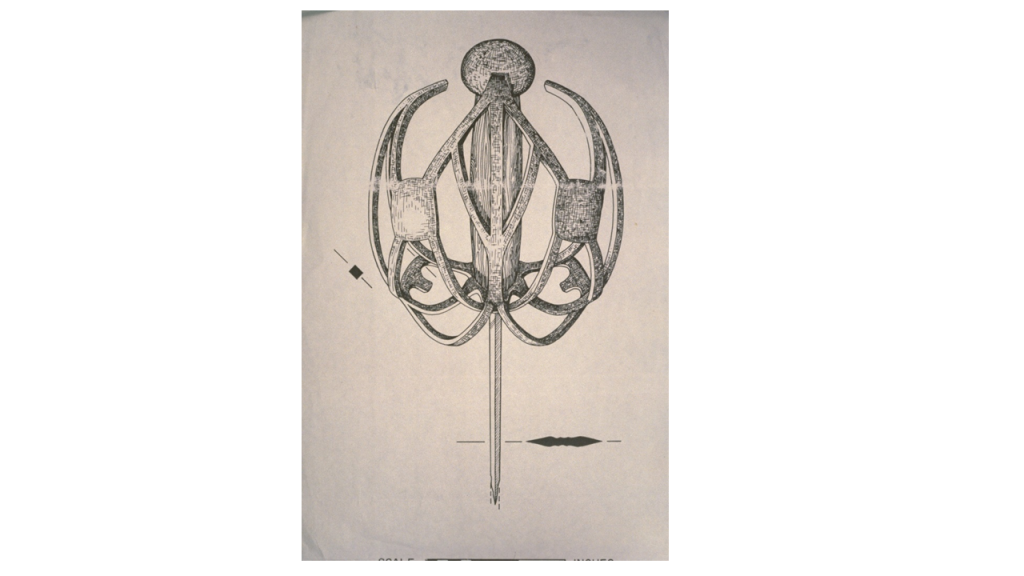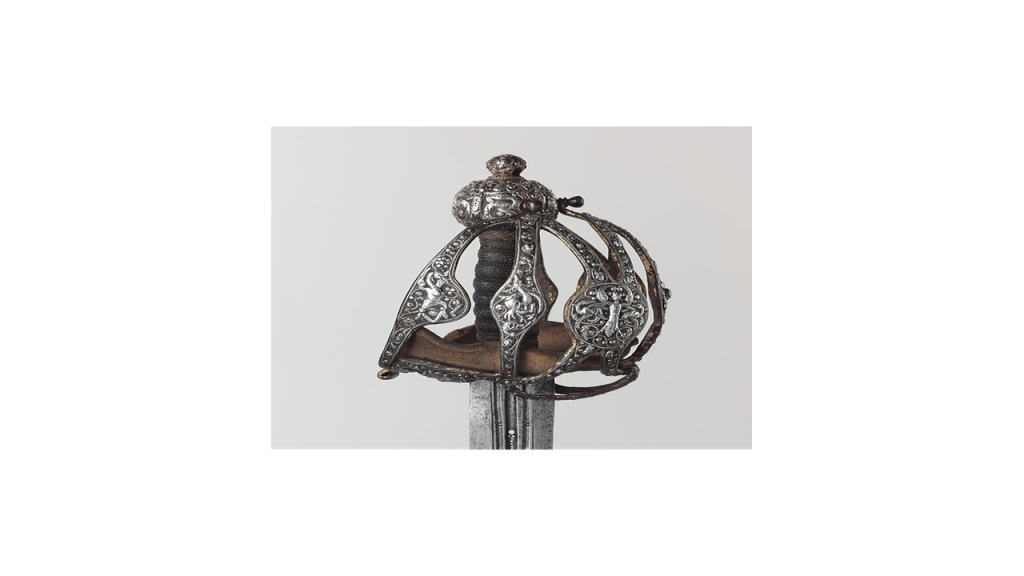
A basket hilt sword like the type aboard the Sea Venture was a sword with a hilt that has a basket-shaped guard serving to cover and protect the user’s hand. The guard of the basket hilt sword completely enclosed the hand with “a system of connected bars extending from the guard to the pommel.
The use of basket hilt swords like the one recovered from the Sea Venture and earlier types of swords did not revolve mainly around the use of the blade and the ability of the user to parrying enemy attacks with it. Rather, the basket hilts were a defensive mechanism like shields or “body-armour.”
The basket hilts provided a certain degree of protection to users’ from limited to very significant amounts, depending on the era the swords came from. For example, the three types of basket hilt swords that best resemble the sword from the Sea Venture are labeled as early basket hilts because of their typology in 1560, 1560-1570, and the late 15th Century and the early 16th Century.
The hilt of the sword at the York Castle Museum consisted of “main and outer side knuckle-guards and filler saltire of supporting bars.” The rear arms of the saltire are linked to a longitudinal bar, which is the inner rear guard. There are also two quillion extensions that are recurved at right angles to the sword’s blade and ending in writhen bud-like knobs. There is also a pommel in the form of a sphere and a loop forward guard on the outside of the hilt that is also “recurved in a S-shape and attached to the blade end of the forward saltire bar and to the forward quillion.”
The construction of the sword hilt from the Royal Aromouries collections includes of main, inner, outer side knuckle-guards, and two diagonal bars on the rear of the hilt and on the inside and outside of it as well to form the rear-guards. There is also a saltire of bars supporting a filler arrangement on the inside and outside of the hilt between its main and side knuckle-guards. This hilt also has long front and rear quillions recurved at right angles to the plane of the sword’s blade. Lastly, this sword hilt’s “pommel is made up of two hollow hemispheres joined in the middle.”
Based on the materials used to build a basket-hilt sword from between 1600-1625, and the fact that the sword from the National Museums of Scotland was possibly made in the early 17th Century, it is possible that the latter sword and the one on the Sea Venture (both the hilt and the blade) was also made of steel, silver, gold, and leather.
The hilt of the sword belonging to the National Museums of Scotland has main and side knuckle-guards and a diagonal rear-guard, with the main knuckle-guard bisecting two ovals placed one above the other. The side knuckle-guard also has curved bars on either side of it. Lastly, the hilt has a prominent lobe on the linking cross-bar at the blade-end of the hilt between the side knuckle-guard and rear-guard.
However, there is evidence to suggest that most of the early of the basket hilt swords and their hilts’ constructions (as well the basket hilt swords up to the mid eighteenth century) mainly consisted of iron rather than steel. According to records, even though steel was available (such as with the sword dated 1600-1625), people did not start using steel regularly in the construction of sword hilts until the 19th Century. So it is also highly possible for the three basket hilt swords that best resemble the basket hilt sword from the Sea Venture are most likely iron-based designs. It is also possible that the Sea Venture sword and three swords that best resemble it have alternative metals that were usually used more for decorative rather than functional purposes because their strength is nothing compared to that of iron. These alternative metals include brass and silver.
